Retail is Lansdowne 2.0's moneymaker. Can it carry the project?
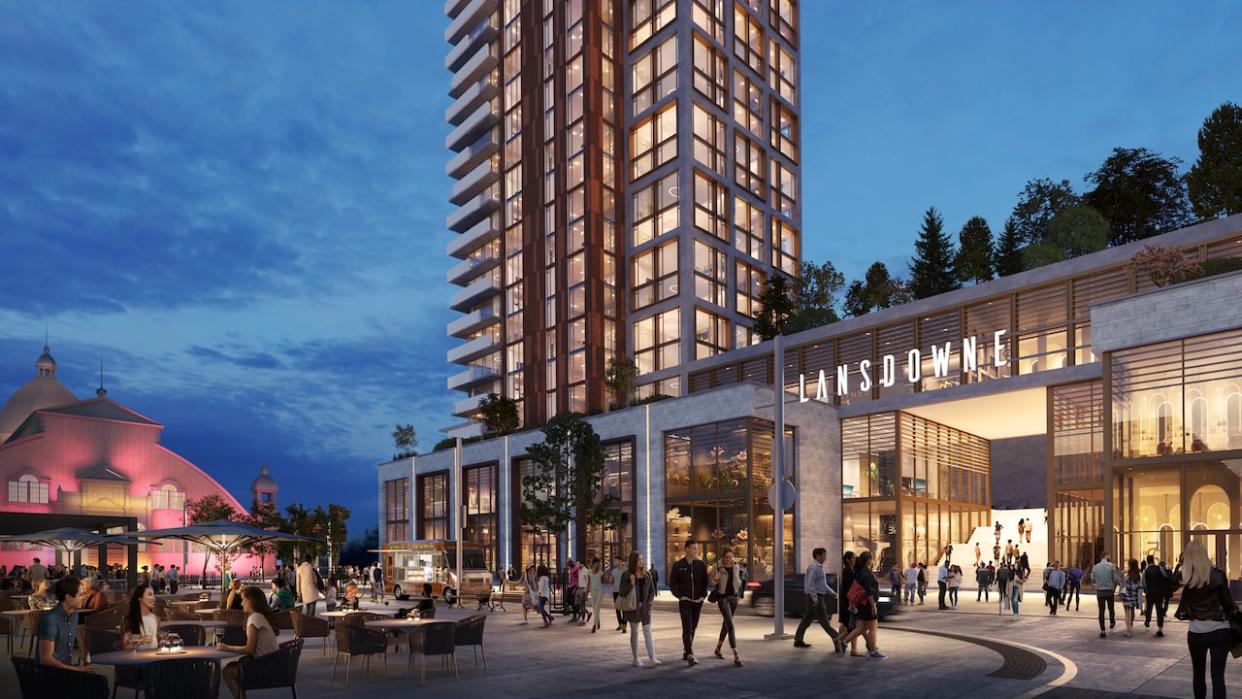
The redevelopment discussions may focus on the state of its sporting facilities, but there's no doubt that Lansdowne 2.0's financial future hinges on the profitability of its retail arm.
With $419 million on the line for the urban lifestyle park's latest redesign, big-name critics say they need proof the revenue source is sound.
In fact, holding onto major businesses is so important that GoodLife Fitness could take up residence in the Horticulture Building — a heritage asset the City of Ottawa once spent $7 million to move 120 metres — during the potential construction.
"Retail is critical to the affordability of the overall partnership and the business case for redevelopment," city staff wrote in the 218-page report set to be presented to councillors this week, noting that the retail strategy contributes to Lansdowne's "year-round vitality."
Detailed financial projections suggest that retail would bring in $1.08 billion, after expenses, from 2012 to the end of 2066, enough to offset substantial losses from the stadium and the Ottawa 67's hockey franchise.
"We can't know [if that's realistic] because they're hiding a lot of the documentation," said Michael Wernick, the University of Ottawa's Jarislowsky Chair in Public Management and former clerk of the Privy Council.
He, and others, argue the public deserves to know more.
"It's a lot of taxpayer money. It's taxpayers in every corner of Ottawa that are at risk of not getting their money back."
Major retail expansion gives 'no financial benefit'
While the initial Lansdowne Park redevelopment undoubtedly revitalized the site, it has so far been a financial failure.
The public-private partnership with Ottawa Sports and Entertainment Group (OSEG) has generated no income, with retail surfacing as the only steady moneymaker.
Under the Lansdowne 2.0 plans, the area of retail space housing the GoodLife Fitness and team stores will need to be torn down so the aging Civic Centre and the stadium's north-side stands can be replaced.
OSEG's original plans had called for the rebuilt structure to add 67,000 square feet of retail, but the city and accounting firm Ernst & Young found it would provide "no financial benefit," citing the added cost of construction and financing.
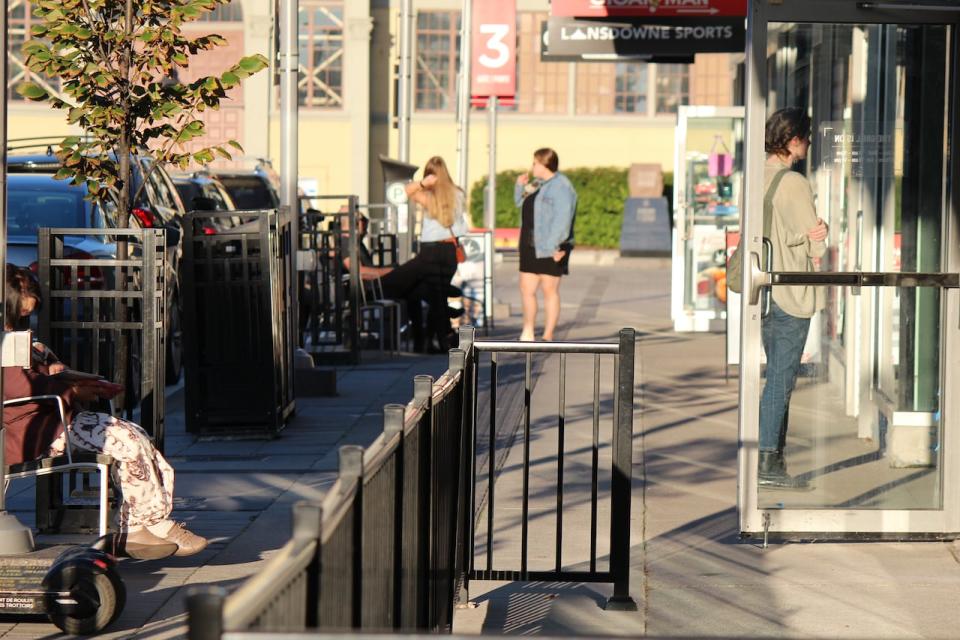
One aim of the Lansdowne 2.0 redevelopment is getting more people to the site on days without sporting events. (Sara Frizzell/CBC)
The revised plan will focus on restoring lost space, adding a scant 8,000 square feet and ensuring a second-floor area suitable to host GoodLife Fitness — a tenant known to "generate traffic".
The financial due diligence report noted "shortcomings in OSEG's model," suggesting it overlooked "real-world leasing complexities like tenant rollovers, vacancy lags, and the variable nature of rental growth."
Take predictions with 'grain of salt': economist
The latest iteration of the Lansdowne project also aims to address concerns about the complex system of financial returns by simplifying the "waterfall" distribution process and including an "agile" audit carried out by the city's auditor general as the project rolls out, not afterwards.
But prominent figures who've called for added transparency — including Wernick, along with former parliamentary budget officer Kevin Page and former federal cabinet minister Catherine McKenna — don't seem convinced the partnership has gone far enough.
"We need to take these predictions with a grain of salt," said Neil Saravanamuttoo, former chief economist of the G20's Global Infrastructure Hub.
He noted how far they stretch into the future, saying "obviously a lot can happen between now and then."
Saravanamuttoo also suggested that when Ernst & Young described OSEG's retail assumptions as "optimistic," the consultant really meant "unlikely to ever happen."
Wernick was less vocal on the specifics, but said "the onus is on the mayor and councillors who support the project to show that the risks are reasonable."
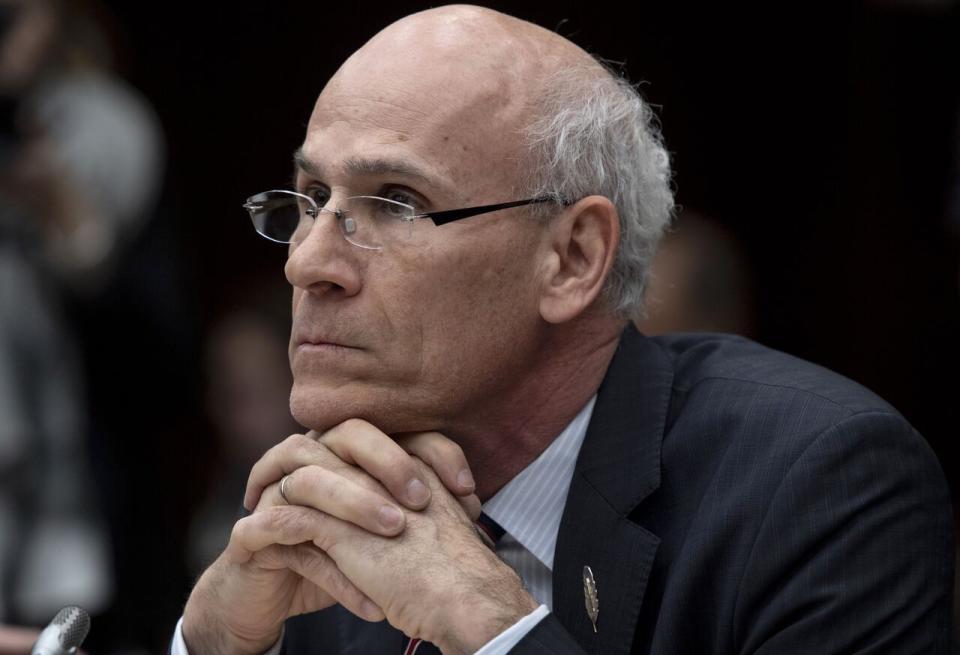
Michael Wernick, photographed here during his time as clerk of the Privy Council, says the partnership is hiding behind commercial confidentiality and should be more transparent. (Justin Tang/The Canadian Press)
What happens to retail during construction?
The city and OSEG are set to share the financial repercussions related to the temporary loss of retail space and stadium seating, pegged at $10 million.
But the partnership does lay out a plan to maintain its affected "anchor tenant."
The retail partnership aims to honour its lease by relocating that business — not expressly identified in this area of the report, but suggested elsewhere to be GoodLife — into another existing Lansdowne retail space.
If that's not possible, the Horticulture Building will be made available for what's expected to be two to three years. The tenant would "continue to pay rent and operating costs," while any community events would be moved to the newly constructed event centre.
Saravanamuttoo said the city should do everything possible to accommodate GoodLife, but access to the Horticulture Building would be "a real problem" since it's such a great community space.
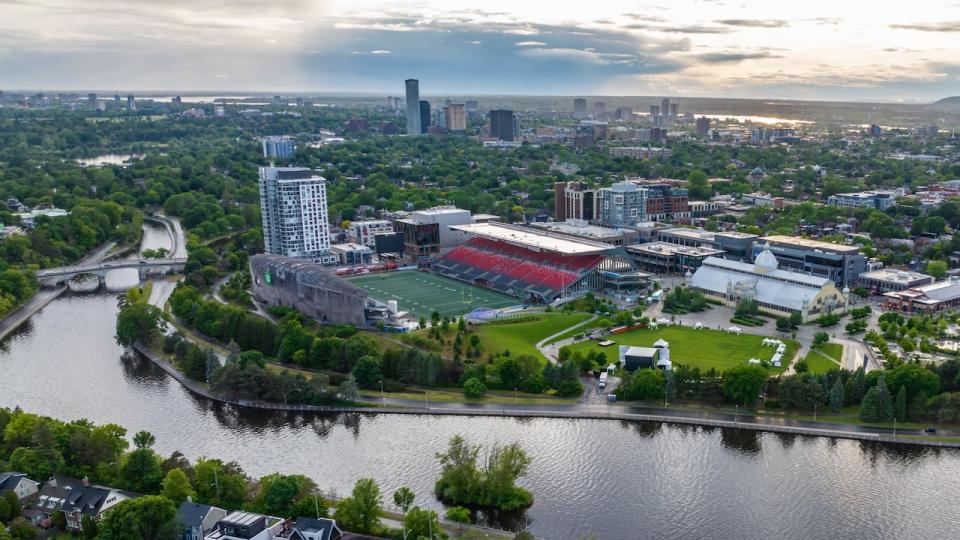
A drone view of the Rideau Canal and Lansdowne Park in Ottawa on June 13, 2023. (Michel Aspirot/CBC)
Councillor warns businesses to be 'very concerned'
Capital ward Coun. Shawn Menard, who represents the area, warns that up to ten years of construction could prove quite disruptive to the overall site.
He also said the best predictor of the future is the past.
"I think businesses should be very concerned here," he said. "Anchor tenants have already left. We saw the PetSmart leave, we see now the Bank of Montreal is leaving ... this will have reverberating repercussions for a long period of time if it goes forward."
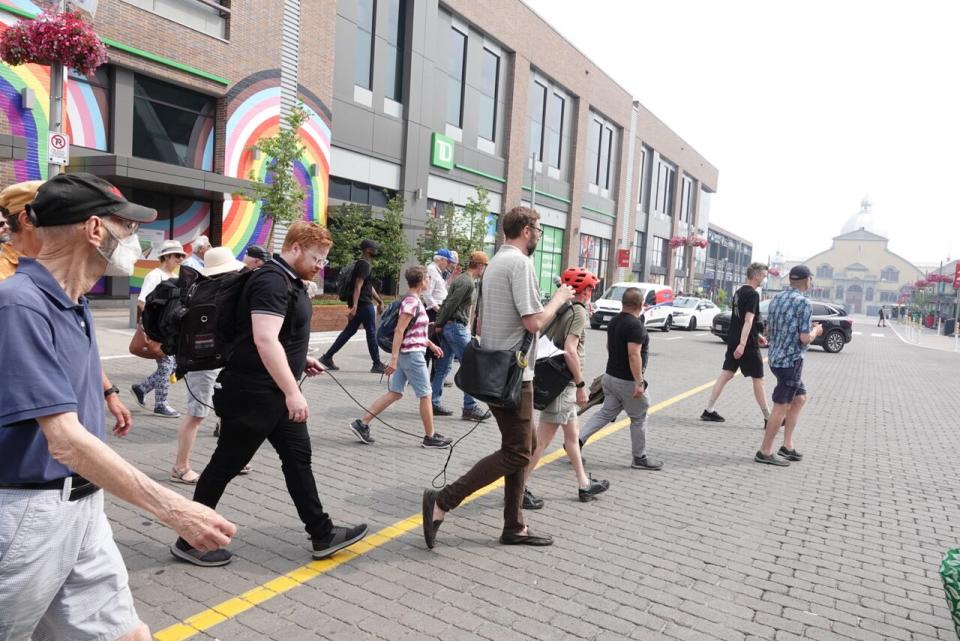
Capital ward Coun. Shawn Menard, seen here leading a group on a tour of Lansdowne Park, says prolonged construction could hit retailers. (Giacomo Panico/CBC)
After the disruptions end, the city and OSEG seem confident that the revitalized site will get people shopping and eating at Lansdowne on days the Ottawa Redblacks aren't playing.
Saravamuttoo is less convinced.
"For anyone that's walked the Lansdowne site, it's really hard to understand how we're projecting a billion dollars in retail profits," he said.
"On game day, and at the farmers' market, there's lots of people around. But any other time at Lansdowne, it's quite frankly a bit of a ghost town."
The Lansdowne 2.0 proposal will head to a joint meeting of the planning and finance committees on Thursday, before being presented to a special city council meeting on Nov. 10.


